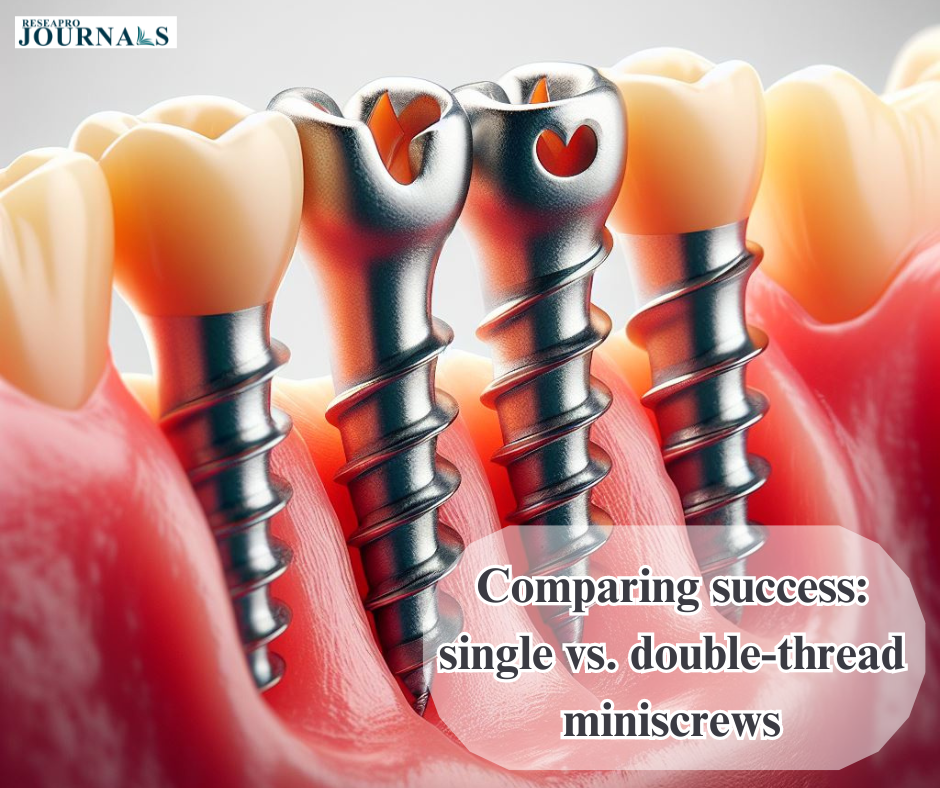
A recent comparative study aimed to investigate the success rates of single-thread and double-thread orthodontic miniscrews within the maxillary arch. Orthodontic miniscrews serve as temporary anchorage devices to aid in tooth movement during orthodontic treatment. Understanding which type of miniscrew achieves better outcomes is crucial for optimizing treatment effectiveness.

Body:
Researchers analyzed data from orthodontic patients who received either single-thread or double-thread miniscrews in the maxillary arch. Success rates were assessed based on factors like miniscrew stability, absence of inflammation, and ability to withstand orthodontic forces without loosening. Results revealed that both single-thread and double-thread miniscrews exhibited high success rates in the maxillary arch. However, there were slight differences between the two types. Single-thread miniscrews showed slightly better stability and inflammation control, while double-thread miniscrews had a slightly lower incidence of loosening when subjected to orthodontic forces.
Conclusion:
Both single-thread and double-thread orthodontic miniscrews demonstrate high success rates in the maxillary arch. Orthodontists can choose between these options based on individual patient needs and treatment goals. Further research may delve into long-term success rates and potential differences in clinical outcomes between single-thread and double-thread miniscrews to refine orthodontic treatment strategies.
